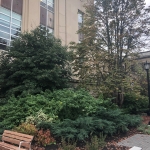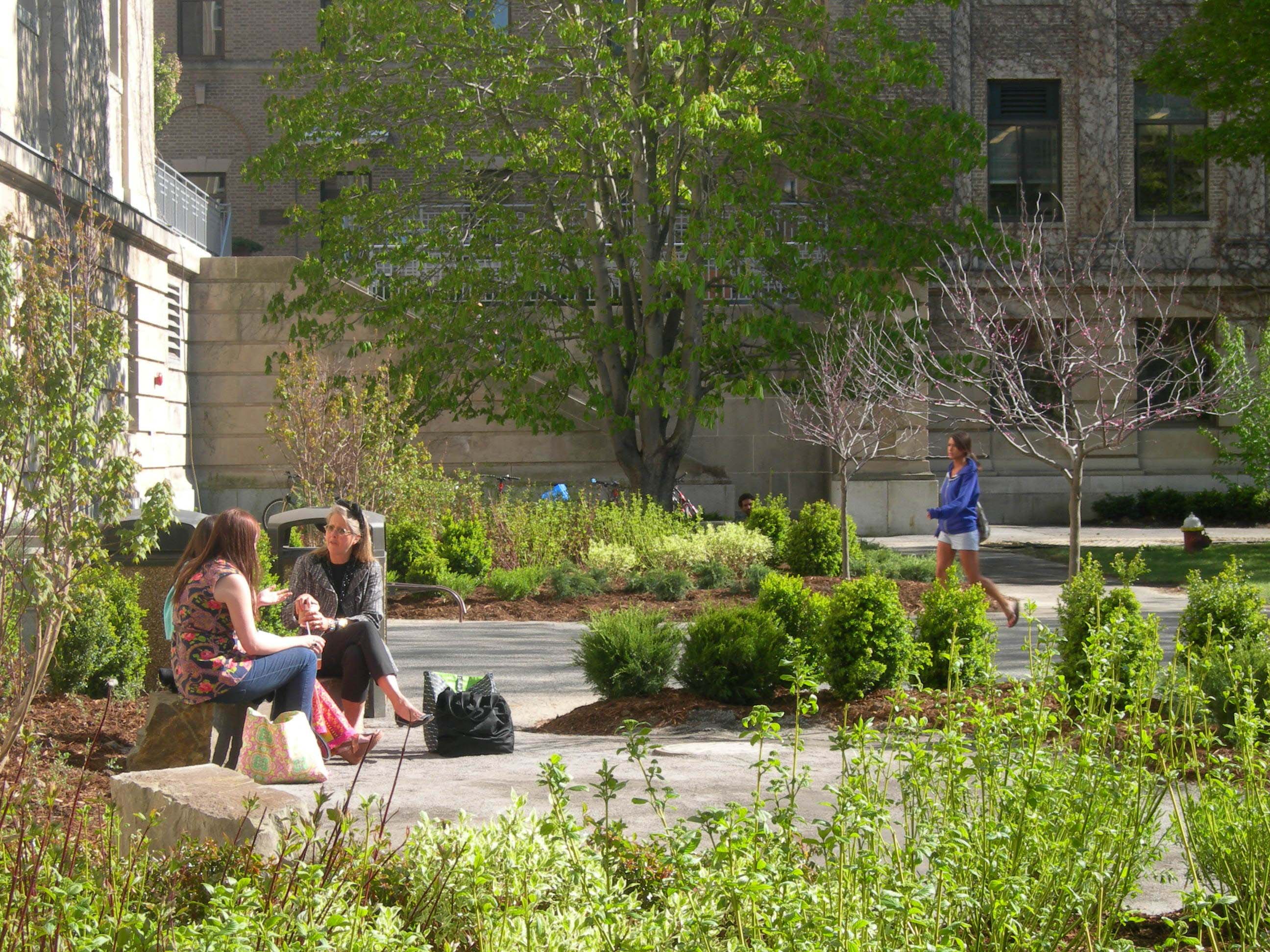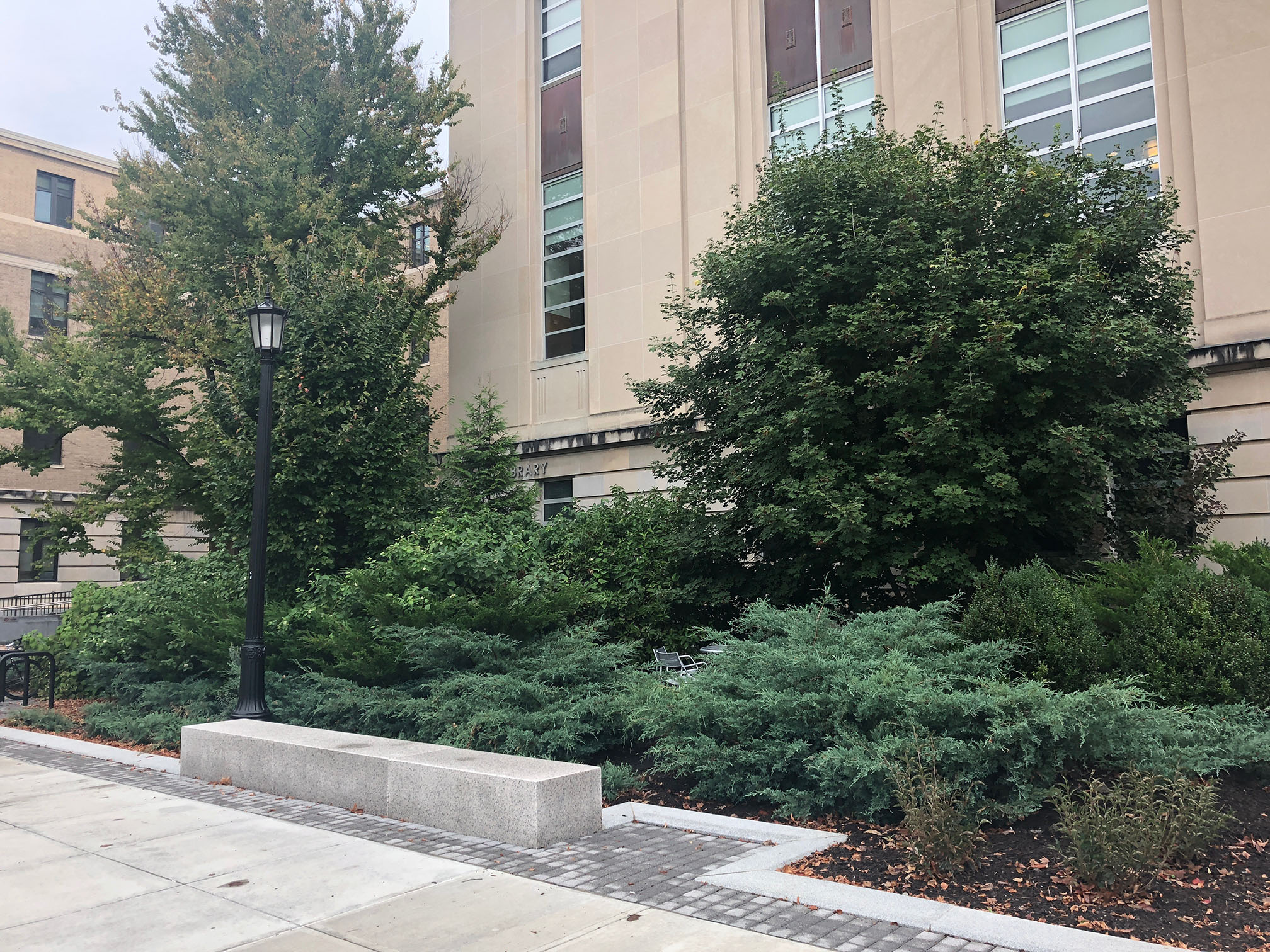![]()
Mann Library Entrance SITES Accredited Garden
Sustainable Landscapes Trail at Cornell University
The garden at the entrance to Mann library is highlighted for its recognition as a Sustainable SITES Initiative® accredited landscape and as a showcase for the Scoop & Dump method of soil restoration. To restore the landscape a soil remediation technique known as the “Scoop and Dump” method was employed to ameliorate damage incurred during construction and to provide an appropriate substrate for landscape plants. In 2012 a study was designed and conducted to determine the effects on plant growth of the Scoop and Dump technique of soil remediation compared to non-rehabilitated soils. This site has been monitored since its instillation to determine the benefits derived from adhering to the SITES protocols and using the Scoop and Dump method.
Return to Sustainable Landscape Trail Sites Homepage
Why is this site sustainable?

As a Sustainable SITES Initiative® accredited landscape, the garden at the entrance to Mann library is highlighted for its recognition as a and as a showcase for the Scoop & Dump method of soil restoration:
- SITES® is a system used to develop, design and certify landscapes that adhere to sustainability standards and provide ecosystem benefits.
- The Scoop & Dump method of soil remediation was used to convert this landscape from a construction site to a functioning ecosystem. For more information Effects of the Scoop & Dump Soil Remediation Technique on Urban Soil Quality(pdf) presentation.
- The landscape design features a low-maintenance plant palette that reduces the need for supplemental watering and use of pesticides.
- Seating and gathering areas were built into the landscape for added site functionality.
- The landscape features long-term ecological monitoring that tracks the changes in soil health and landscape plantings.
The project obtained SITES® credits for:
- Reducing potable water use for landscape irrigation by 50% from established baseline.
- Controlling and managing known invasive plants found on site.
- Restoring soils disturbed by previous development.
- Implementing a long-term monitoring strategy that included soil sampling prior to site rehabilitation.
The results of the 2012 monitoring study showed that using the Scoop and Dump method improved physical, chemical and biological aspects of the soils.
Changes in quality of Scoop and Dump soils compared to unamended controls included:
- Increased growth of tree root, shoot and total leaf area
- Increased total organic matter
- Improved available water holding capacity
- Reduced bulk density (compaction)
- Increased available depth for rooting proliferation (de-compaction)
- Improved aggregate stability
- Increased active carbon
- Increased potentially mineralizable nitrogen
Mann Library Entrance Construction & Function
During a three-year renovation of Mann Library, the front area served as a construction staging area. The weight of massive loads of construction vehicles, tools, and constant foot traffic caused the soil to become highly compacted and inhospitable for plant growth. In 2010 the area was selected for renovation, including rehabilitation, landscape design and plant installation by students from the class “ Creating the Urban Eden,” Horticulture/Landscape Architecture 4910/4920. The design and installation of the project followed the 2009 Guidelines and Performance Benchmarks set forth by the SITES® Rating System, which allowed the landscape to be selected as a pilot project.
Publication: Miles Schwartz Sax, Nina Bassuk, Harold van Es, Don Rakow (2017) Long-term Remediation of Compacted Urban Soils by Physical Fracturing and Incorporation of Compost. Urban Forestry & Urban Greening, Volume 24. Pages 149-156. ISSN 1618-8667


